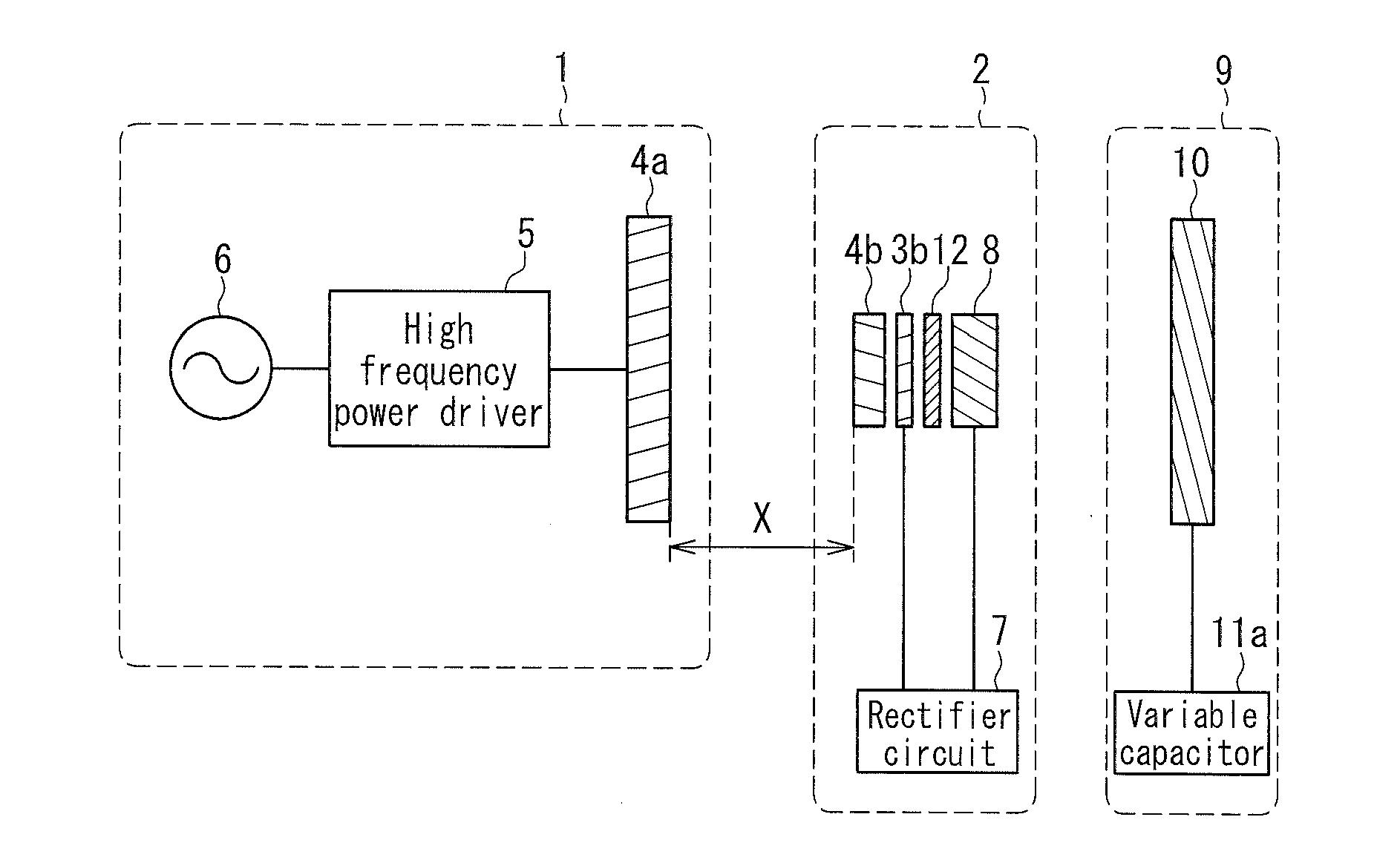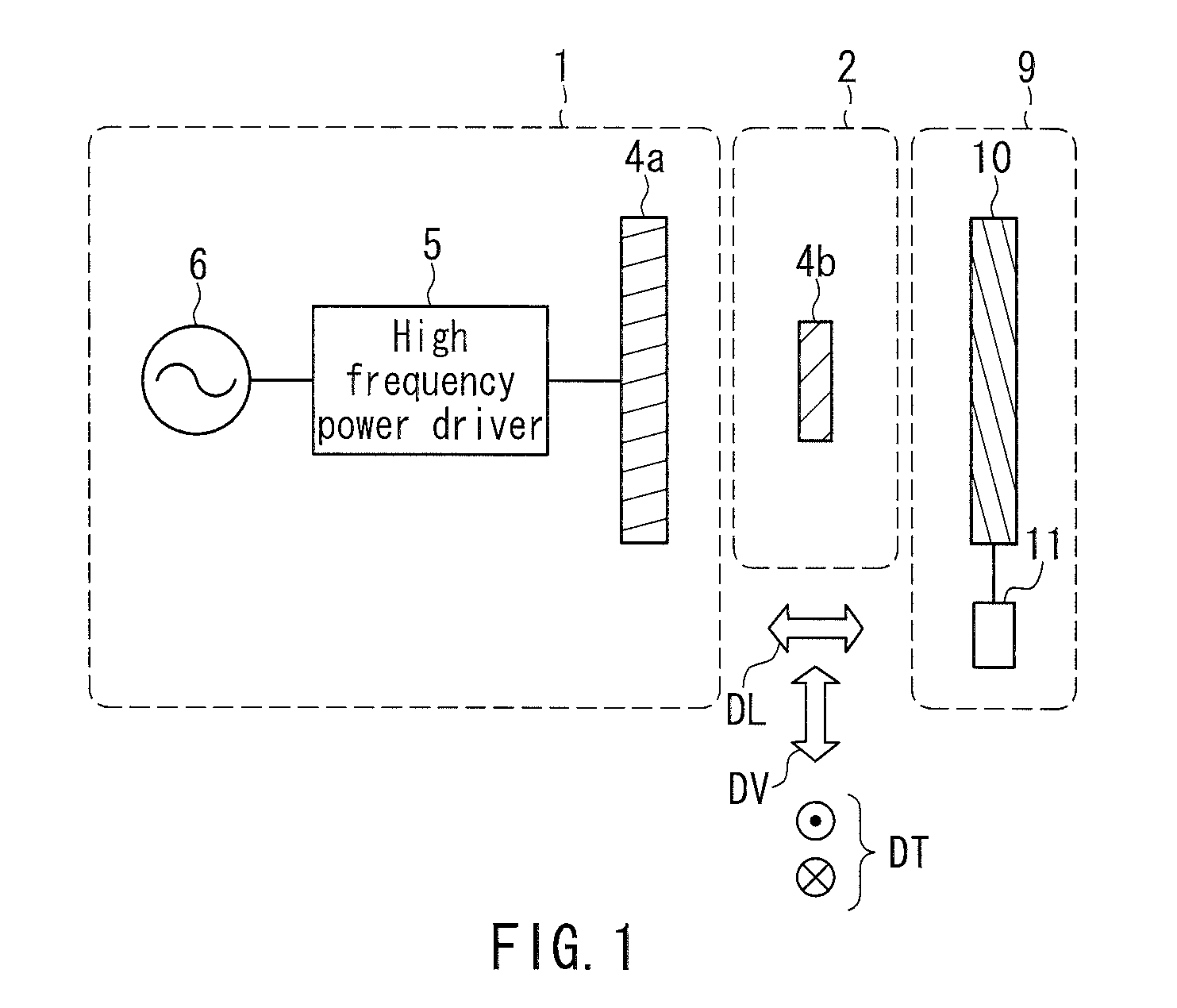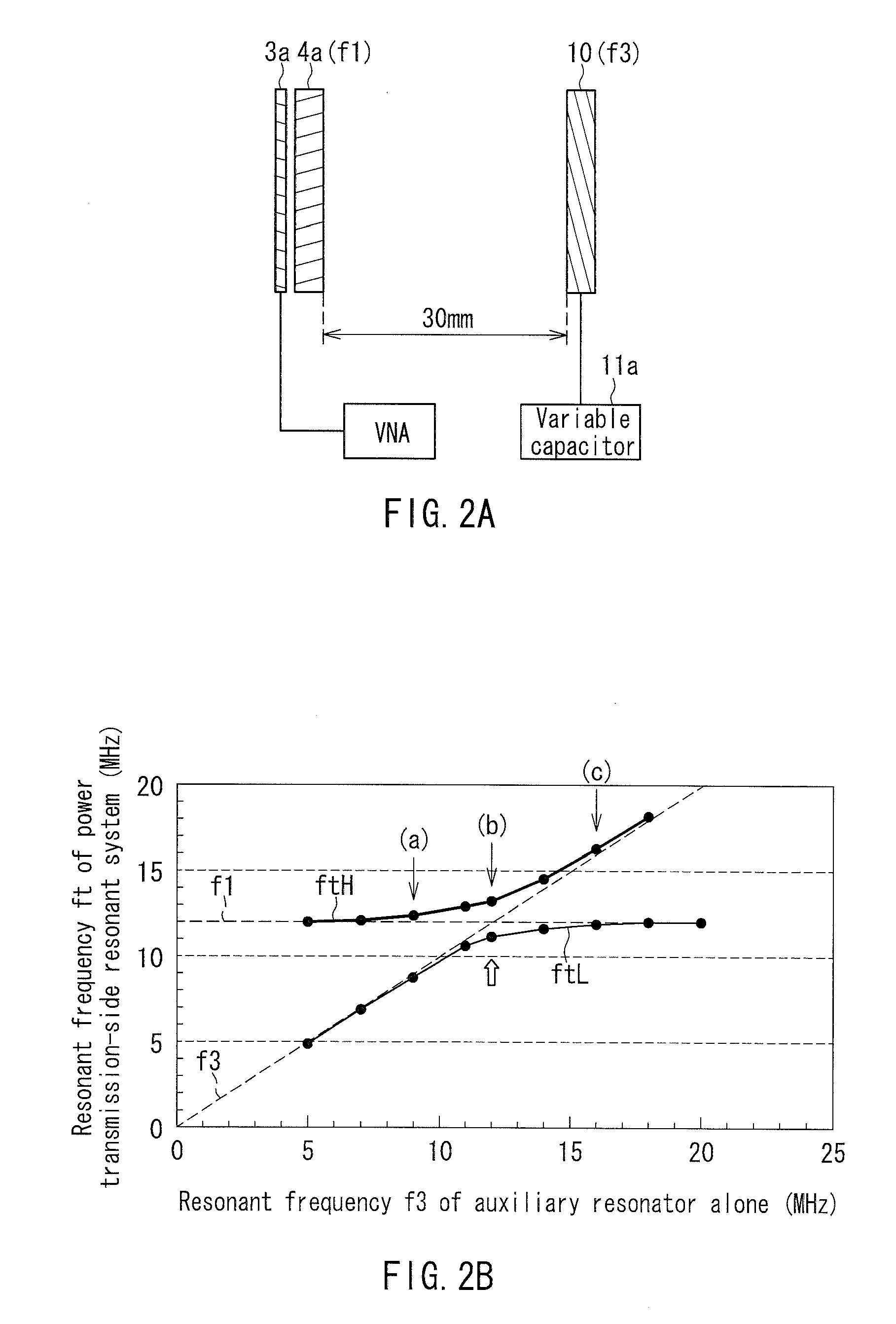Wireless power transfer system and wireless power transfer method
a power transfer system and wireless technology, applied in the direction of inductance, transportation and packaging, rail devices, etc., can solve the problems of short power transmission distance, technique does not solve variations in power transfer efficiency, and causes dielectric loss, etc., to increase the possible power transfer area, suppress variations in transfer efficiency, and improve the effect of power transfer efficiency
- Summary
- Abstract
- Description
- Claims
- Application Information
AI Technical Summary
Benefits of technology
Problems solved by technology
Method used
Image
Examples
embodiment 1
[0062]FIG. 1 is a schematic cross-sectional view showing the configuration of a wireless power transfer system of a magnetic field resonance type according to Embodiment 1. The present embodiment illustrates the basic concept of the wireless power transfer system of the present invention. Note that the same elements as those of the conventional wireless power transfer system shown in FIG. 20 are denoted by the same reference numerals, and the description thereof will not be repeated.
[0063]This wireless power transfer system includes a power transmission auxiliary device 9 in addition to the power transmitter 1 and the power receiver 2 of conventional technology, and is configured to perform wireless power transfer in a state in which the power receiver 2 is placed in a space between the power transmitter 1 and the power transmission auxiliary device 9. The power transmitter 1 converts power of an AC power supply (AC 100 V) into transferable high frequency power, and transfer the pow...
embodiment 2
[0100]The basic configuration of a wireless power transfer system according to Embodiment 2 will be described with reference to FIGS. 8A to 8C. FIGS. 8A to 8C are schematic cross-sectional views showing the configuration and operation of the wireless power transfer system according to the present embodiment. That is, from FIG. 8A to FIG. 8C show an exemplary operation where a power receiver travels in one direction. In order to facilitate understanding of the illustrations in these drawings, a power transmission coil included in a power transmission device, an auxiliary coil included in a power transmission auxiliary device, and a power receiving coil included in a power receiver are shown schematically. The same goes for the embodiments described later.
[0101]In the configuration shown in FIGS. 8A to 8C, a power transmission coil 13, an auxiliary coil 14, a power transmission coil 15, and an auxiliary coil 16 are arranged in order along their axial direction. The power transmission ...
embodiment 3
[0121]The basic configuration of a wireless power transfer system according to Embodiment 3 will be described with reference to FIGS. 11A to 11C. FIGS. 11A to 11C are schematic cross-sectional views showing the configuration and operation of the wireless power transfer system according to the present embodiment. From FIG. 11A to FIG. 11C show an exemplary operation in which a power receiver travels in one direction.
[0122]In the configuration of FIGS. 11A to 11C, a power transmission coil 29 and an auxiliary coil 30, a power transmission coil 31 and an auxiliary coil 32, and a power transmission coil 33 and an auxiliary coil 34 are in pairs, opposing each other, and the pairs form three power receiving spaces E to G. That is, one power receiving space is formed by a pair of opposing power transmission and auxiliary coils and the power receiving spaces E to G are arranged in sequence in the direction perpendicular to the axis of each power transmission coil.
[0123]In the power receivin...
PUM
 Login to View More
Login to View More Abstract
Description
Claims
Application Information
 Login to View More
Login to View More - R&D
- Intellectual Property
- Life Sciences
- Materials
- Tech Scout
- Unparalleled Data Quality
- Higher Quality Content
- 60% Fewer Hallucinations
Browse by: Latest US Patents, China's latest patents, Technical Efficacy Thesaurus, Application Domain, Technology Topic, Popular Technical Reports.
© 2025 PatSnap. All rights reserved.Legal|Privacy policy|Modern Slavery Act Transparency Statement|Sitemap|About US| Contact US: help@patsnap.com



